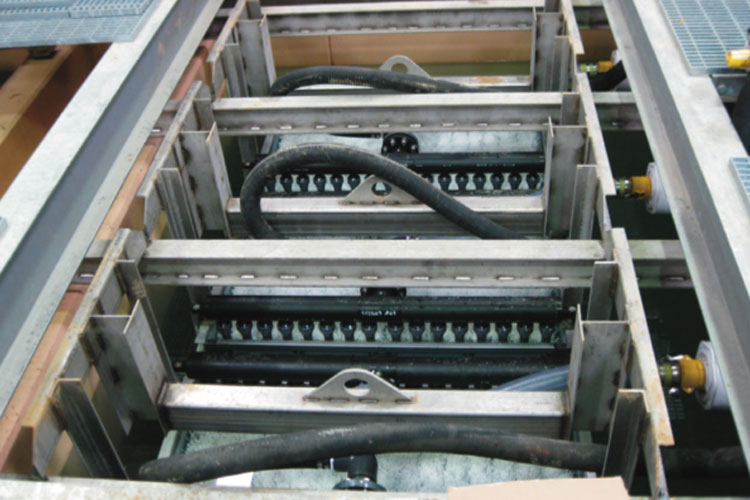Membranes
Because low-pressure microfiltration (MF) and ultrafiltration (UF) membranes have pores that are in the sub-micron range, these membranes remove nearly all of the TSS and insoluble (particulate) BOD. In addition, MF and UF membranes will remove soluble (dissolved) BOD that consists of molecules larger than the membrane pores. To achieve greater BOD removal, a metal salt coagulant and/or powdered activated carbon (PAC) can be added to the membrane influent; the carbon, along with any metal hydroxide precipitate formed by the coagulant, absorb some of the soluble BOD, and the membrane then removes the carbon and metal hydroxide along with the absorbed BOD.
Advantages of BOD and TSS Removal Using Membranes
- Achieves the highest level of BOD and TSS removal.
- Capable of TSS removal to below levels detectable by standard analytical methods (2 mg/L) and turbidity removal to less than 0.1 NTU.
- Provides excellent pretreatment for medium-pressure nanofiltration (NF) membranes and high-pressure reverse osmosis (RO) membranes, minimizing membrane cleaning.
Featured Application

Oldest Town in West Virginia Adopts Modern Aqua-Aerobic® MBR System to Meet Chesapeake Bay Initiatives
In 2010, Shepherdstown selected the Aqua-Aerobic® MBR Membrane Bioreactor as the new system which would treat the town’s wastewater. The decision was based on the ability to utilize the plant’s existing infrastructure without the need for additional tanks.
Read Success Story